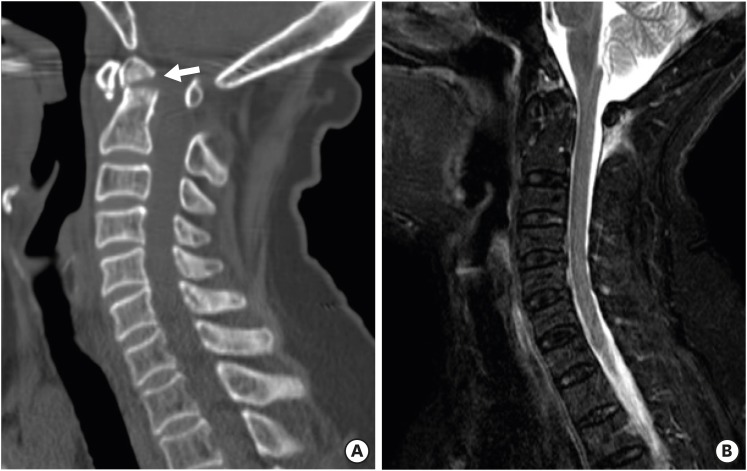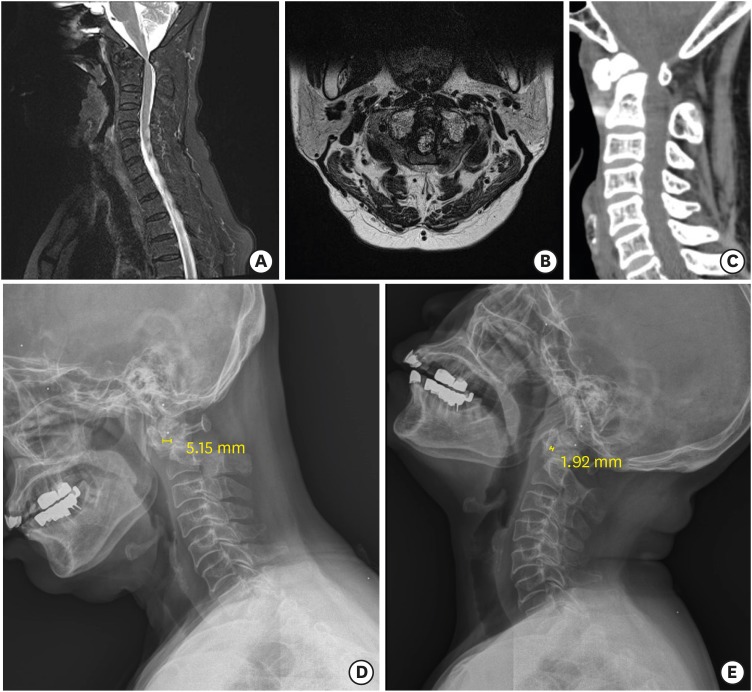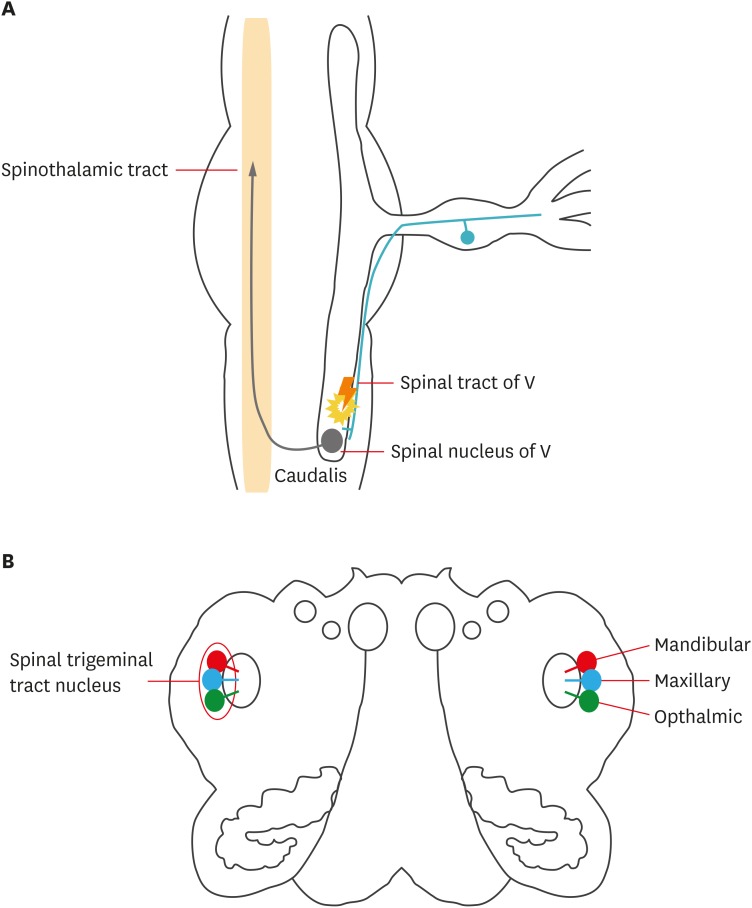Korean J Neurotrauma.
2019 Apr;15(1):38-42. 10.13004/kjnt.2019.15.e10.
Trigeminal Neuralgia Resulting from Delayed Cervical Cord Compression after Acute Traumatic Fracture of Odontoid Process
- Affiliations
-
- 1Department of Neurosurgery, School of Medicine, Inje University Busan Paik Hospital, Busan, Korea. shpaeng@empas.com
- KMID: 2444204
- DOI: http://doi.org/10.13004/kjnt.2019.15.e10
Abstract
- Trigeminal neuralgia is caused by compression of trigeminal nerve root and it leads to demyelination gradually. It was almost idiopathic and occurred unexpected. The upper cervical spinal cord contains the spinal trigeminal tract and nucleus. Fibers with cell bodies in the trigeminal ganglion enter in the upper pons and descend caudally to C2 level. We experienced a rare patient with facial pain, which was paroxysmal attack with severe pain after a clear event, cervical spinal injury (C2). So, this case reminds us of a possible cause of trigeminal neuralgia after a trauma of the head and neck.
Keyword
MeSH Terms
Figure
Cited by 1 articles
-
Current Concepts in the Treatment of Traumatic C2 Vertebral Fracture : A Literature Review
Subum Lee, Junseok W Hur, Younggyu Oh, Sungjae An, Gi-Yong Yun, Jae-Min Ahn
J Korean Neurosurg Soc. 2024;67(1):6-13. doi: 10.3340/jkns.2023.0098.
Reference
-
1. Brownstone PK, Ballenger JJ, Vick NA. Bilateral superior laryngeal neuralgia: its successful treatment with carbamazepine. Arch Neurol. 1980; 37:525. PMID: 7417047.2. FitzGerld MJT, Folan J. Clinical neuroanatomy and related neuroscience. ed 4. Philadelphia, PA: WB Saunders Company;2002.3. Jorns TP, Zakrzewska JM. Evidence-based approach to the medical management of trigeminal neuralgia. Br J Neurosurg. 2007; 21:253–261. PMID: 17612914.
Article4. Knibestöl M, Hildingsson C, Toolanen G. Trigeminal sensory impairment after soft-tissue injury of the cervical spine. A quantitative evaluation of cutaneous thresholds for vibration and temperature. Acta Neurol Scand. 1990; 82:271–276. PMID: 2270756.5. Manzoni GC, Torelli P. Epidemiology of typical and atypical craniofacial neuralgias. Neurol Sci. 2005; 26(Suppl 2):s65–s67. PMID: 15926023.
Article6. McGlone R, Morton RJ, Sloan JP. Trigeminal pain due to whiplash injury. Injury. 1988; 19:366. PMID: 3255722.
Article7. Rodine RJ, Aker P. Trigeminal neuralgia and chiropractic care: a case report. J Can Chiropr Assoc. 2010; 54:177–186. PMID: 20808617.
- Full Text Links
- Actions
-
Cited
- CITED
-
- Close
- Share
- Similar articles
-
- Late Myelopathy Associated with Odontoid Fracture: Report of Two Cases
- Malunion of the Odontoid Process Developing Cervical Myelopathy: A Case Report
- Delayed Nonunion of a Type II Odontoid Fracture, after Apparent Bony Fusion: Case Report
- Transoral Fusion of the Odontoid Process Fracture
- Transoral Approach of Upper Cervical Lesions: 1. Traumatic Odontoid Fracture 2. Upper Cervical Epidural Abscess




